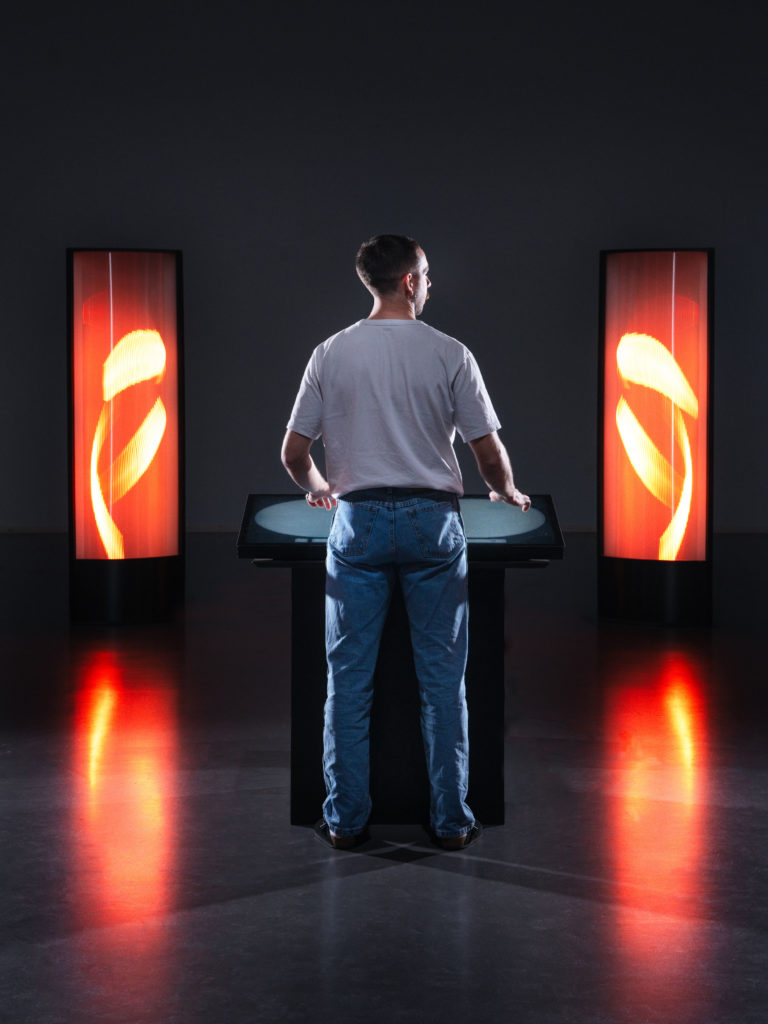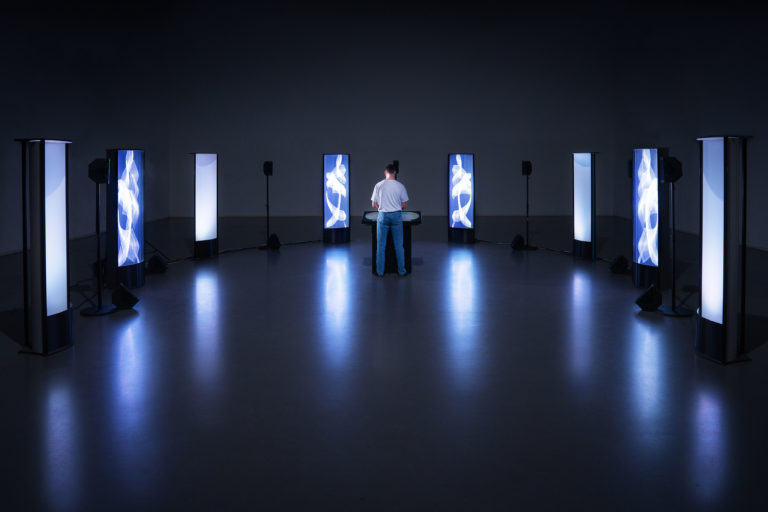Praeludium
Audiences of classical music are declining and growing older. And yet, this centuries-old culture can have a profoundly positive impact on listeners, and acts as an important reference for contemporary composition. Design research and technology have the potential to support the development of new experiences to reconnect audiences with the richness of classical music. The Praeludium project demonstrates a disruptive approach. Two years of transdisciplinary work resulted in a pioneering immersive installation that has helped to identify key principles which can significantly impact the listener’s perception of classical music.
Advanced multitrack recordings of classical music open the potential to generate new sound restitutions that enhance human perception. Recent research also offers a better understanding of the audience’s overall experience of a musical piece and how it can be positively altered. In turn, new technologies pave the way for the creation of disruptive tools and immersive installations to stimulate our senses in novel ways. With this as an exciting starting point, the EPFL+ECAL Lab initiated a collaboration with musicians and festivals to investigate how to reconnect large audiences with classical music.
When associated with colours, visual features of an immersive installation for classical music can significantly enhance audience perception.
The design process began with review of existing installations and research, as well as on-site observations and interviews at the Verbier Festival and other concert venues.
This led to the development of Praeludium, an immersive installation that allows musicians and conductors to enhance the playback of a recorded concert to the public. Designed to be shown at festivals and other public gatherings, the installation is composed of a ring of loudspeakers and vertical columns displaying colours and visuals. In the centre, the musician plays the role of the mediator, using a bespoke interface to adjust parameters to highlight and enrich certain elements of the musical score.
These parameters were chosen to support the perception of the music, and not detract from it. Linked to fundamental dimensions from music theory, timbre, texture and sound level were selected for this first version of Praeludium. Each parameter is translated into a feature of the installation, with timbre associated to colour, texture to the geometrical patterns and sound level to the 3D sound emanating from the speakers. In this way, Praeludium offers a multi-sensory listening experience which can be adapted according to the mediator and their audience.
The EPFL+ECAL Lab conducted a series of evaluations of the installation with different audiences following procedures from applied psychology. The aim was to understand the cognitive and emotional impact of the installation’s features on the perception of classical music. The first testing protocol involved professional musicians acting as mediators. Their enhancements of the recorded pieces, through the installation parameters were recorded and then played back to a non-professional audience during a second round of evaluations.
The observations show influences of the installation on the audience. One of the most saliant facts is that alone, the presence of visual patterns actually reduces the hedonic connection with the music due to a higher cognitive load. But when colours are added to the patterns, the phenomenon is reversed and the whole experience is enhanced. In this condition, a significant proportion of listeners think that the sound has been improved, even when no change has been made. These observations provide, rich learnings for future projects and show great potential for the promotion of classical music amongst new audiences.
Praeludium was presented to the public at the International Festival of Sacred Music of Fribourg (FIMS), on June 29, 2024.
Direction
Project Management & ENGINEERING LEAD
research assistant
Art Direction
Software Engineering
Scenography
Béatrice Durandard, Lison Christe
UX Psychology
In collaboration with
Jocelyn Raphanel, sound engineer, Acousmatik.land
Renaud Millet Lacombe, sound engineer, RTS
Stefano Arena, pianist
Photography credits
© EPFL+ECAL Lab / Marvin Merkel





